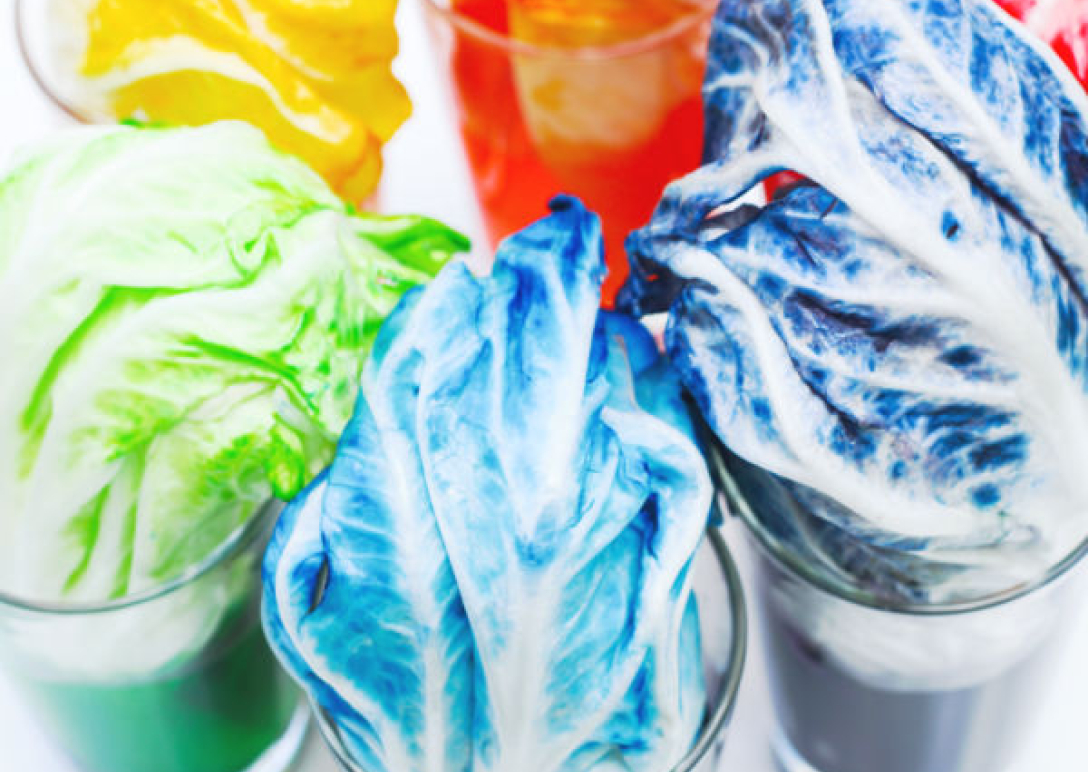Great for looking, bad for eating!
This simple and colorful biology experiment helps to visualize how plants absorb and transport water!

Materials
- 3 or 4 large jars or cups
- Food coloring (preferably multiple colors)
- Water
- Iceberg lettuce or celery (with leaves attached)
Instructions
- Tear off several leaves of lettuce or stalks of celery
- Pour about 2 – 3 inches of water into each of your jars
- Pour 20 drops of food coloring into each of your jars. For a rainbow effect, use different colors in each jar.
- Place a lettuce leaf or celery stalk into each of the jars
- Set the jars aside for at least 3 hours and observe color changes in your vegetables. You can also let your plants set overnight for more color to appear.
How It Works
Plants ‘drink’ water through a chemical process called osmosis. Osmosis is the movement of a liquid from a place with a higher concentration of solids to a lower concentration of solids, creating a more balanced concentration overall. When a plant needs water, it has a higher concentration of solid nutrients within and not enough liquid. Osmosis occurs and pulls water through the roots of the plant until it has enough water to perform photosynthesis and make food.
The plants take the water up to the top of the plant through capillary action. Capillary action is how water sticks to itself and climbs up and down the plant through tubes called the xylem and phloem. Your lettuce and celery are drawing the colored water up through capillary action and into its leaves. While the water will eventually be released from the leaves, the colored particles will stay behind, leaving you with some very pretty produce!
Note: Do not eat the vegetables or water used in this experiment.
